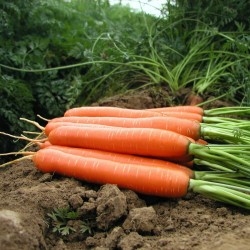Menu
-
MenuInapoi
- Home
-
Categorii
-
-
Categorii
-
Semințe de legume
-
Soiuri după țară
- Soiuri din Armenia
- Soiuri din BiH
- Soiuri din Croația
- Soiuri din Franța
- Varieties from Germany
- Varieties from Greece
- Varieties from Hungary
- Soiuri din India
- Varieties from Italy
- Soiuri din Japonia
- Soiuri din Macedonia de Nord
- Varieties from Peru
- Varieties from Russia
- Varieties from Serbia
- Soiuri din Slovenia
- Varieties from Spain
- Varieties from Thailand
- Soiuri din Turcia
- Varieties from USA
- Semințe de roșii
- Semințe de porumb
- Familia Dovleac
- Familia Bean
- Semințe de castraveți
- Seminte de ardei gras
- Familia morcovului
- Familia ceapa
- Semințe de salată verde
- Familia cartofilor
- Familia de varză
- Semințe de ridiche
- Familia sfeclei
- Semințe de pepene verde
- Semințe de pepene galben
- Semințe de conopidă
- Familia de floarea soarelui
-
Soiuri după țară
- Semințe de fructe
- Seminte de Chili Peppers
- Semințe de plante medicinale
- Semințe de plante cățărătoare
- Copaci - Arbust - Semințe
- Semințe de palmier
- Semințe de ierburi ornamentale
- Semințe de tutun
-
Semințe de legume
-
-
-
-
- PRODUSE NOI
- Crează un cont
- Livrare - Plata
- FAQ
- Acasa
-
- Pachete mari de semințe
- Semințe de plante uriașe
- Semințe de legume
- Soiuri după țară
- Soiuri din Armenia
- Soiuri din BiH
- Soiuri din Croația
- Soiuri din Franța
- Varieties from Germany
- Varieties from Greece
- Varieties from Hungary
- Soiuri din India
- Varieties from Italy
- Soiuri din Japonia
- Soiuri din Macedonia de Nord
- Varieties from Peru
- Varieties from Russia
- Varieties from Serbia
- Soiuri din Slovenia
- Varieties from Spain
- Varieties from Thailand
- Soiuri din Turcia
- Varieties from USA
- Semințe de roșii
- Semințe de porumb
- Familia Dovleac
- Familia Bean
- Semințe de castraveți
- Seminte de ardei gras
- Familia morcovului
- Familia ceapa
- Semințe de salată verde
- Familia cartofilor
- Familia de varză
- Semințe de ridiche
- Familia sfeclei
- Semințe de pepene verde
- Semințe de pepene galben
- Semințe de conopidă
- Familia de floarea soarelui
- Soiuri după țară
- Semințe de fructe
- Seminte de Chili Peppers
- Semințe de plante medicinale
- Semințe de plante cățărătoare
- Copaci - Arbust - Semințe
- Semințe de banane
- Semințe de palmier
- Semințe de ierburi ornamentale
- Semințe de tutun
- Semințe de flori
- Seminte cactus
- Apa plantează semințe
- Instrucțiuni de însămânțare
- Matrite pentru fructe și legume
- Miceliu de ciuperci
- Tuberculi de plante
- Semințe de bambus
- Plante Ayurveda
- Semințe hibride F1
- Ambalaje și altele
- Plante rezistente la frig
- Îngrijirea plantelor
- Condimente organice
- Livrare - Plata
- Fără PayPal și plata cu cardul X
Last Product Reviews
Out of the two seeds, one germinated and the other one was dead and floatin...
By
 Riikka H on 07/03/2024
Riikka H on 07/03/2024
Verified Purchase
Top vanzari
Sunt 1308 produse.
Se afiseaza 526-540 din 1308 produs(e)

Planta rezistenta la frig si inghet
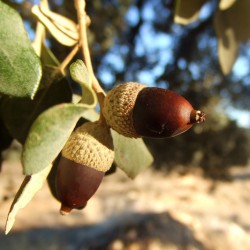
Semințev Stejar Verde...
Pret
6,95 €
(SKU: T 83)
Seeds Gallery EU,
5/
5
<!DOCTYPE html>
<html>
<head>
<meta http-equiv="Content-Type" content="text/html; charset=UTF-8" />
</head>
<body>
<h2><strong>Semințev Stejar Verde (Quercus Ilex)</strong></h2>
<h2><span style="color: #ff0000;"><strong>Preț pentru pachetul de 10 semințe.</strong></span></h2>
<p><strong>verde stejar</strong><span> </span>este un copac vesnic, a cărui longevitate poate ajunge la 1500 de ani! Specia comună se găsește în regiunea mediteraneană, în sud-vest și pe coasta atlantică, de la Bordeaux până la Vannes. Susține până la -12° C. Trunchiul său este scurt și adesea tortuos, iar frunzele lui de "falsă" se măsoară de la 3 la 8 cm, puțin spinoase. Ele sunt verde închis și strălucitoare. Pisicile atârnă la baza lăstarilor anului, iar ghindele sunt produse în toamnă.</p>
<ul>
<li><strong>familia:<span> </span></strong>Fagaceae</li>
<li><strong>tip:</strong><span> </span>copac</li>
<li><strong>origine:</strong><span> </span>Bazinul mediteranean</li>
<li><strong>de tăiere:</strong><span> </span>nu</li>
<li><strong>plantație:</strong><span> </span>cădea</li>
<li><strong>înflorire:</strong><span> </span>Din aprilie până în mai</li>
<li><strong>Înălțime:</strong><span> </span>până la 20 m</li>
</ul>
</body>
</html>
T 83


Planta gigantica (cu fructe gigantice)
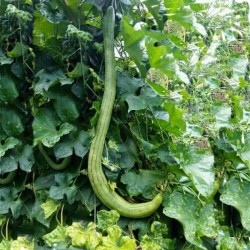
Giant Long Luffa Sponge...
Pret
2,45 €
(SKU: VE 41)
Seeds Gallery EU,
5/
5
<h2><strong>Giant Long Luffa Sponge Seeds (Luffa aegyptiaca)</strong></h2>
<h2><span style="color: #ff0000;"><strong>Price for Package of 5 seeds.</strong></span></h2>
<p><strong>This is the largest and the longest luff that exists.</strong> The original luffa sponge variety producing large fruits on vigorous climbing vines which can be dried for your own home grown sponges. Although slow to start, when established and with warm weather these are vigorous plants and can reach 20ft. Sturdy support is vital as the fruits are heavy and must be kept clear of the ground to prevent rotting.</p>
<div>· Soak seeds overnight before planting.</div>
<div>· Sow in warmth (65 degrees +) ½”- ¾” deep from 4 weeks prior to the last frost under cover. (18-22 days to germinate)</div>
<div>· Remove weaker seedlings, as they do not transplant well.</div>
<div>· When 3-4 inches high gradually acclimatise outdoors after all danger of frost has passed.</div>
<div>· Site the plants in a warm sheltered position with good drainage, these will need full sun and warmth to thrive and sturdy support. (110 days from germination)</div>
<div>· Plant out at least 24”apart and avoid feeding or the crop will be reduced. They will start slow and when established and with warmer weather will quickly accelerate.</div>
<div>· Keep moist throughout the summer and stop watering in autumn as fruits mature.</div>
<div>· In autumn, mature gourds will begin to turn brown and dry turning yellow/brown, feel light with the outside skin loose.</div>
<div>· Harvest remaining fruit before the first frost and mature in a warm well-ventilated position.</div>
<div>· When fully dry the blossom end cap can be broken off, and a vascular</div>
<div>· bundle can be pulled up the side of the gourd like a zipper. The sponge will pop out and be very wet and white.</div>
<div>· Quickly rinse the sponge in water to prevent the plant juices from oxidizing on the sponge and remove the seeds at this time.</div>
<div>The sponges can be rinsed in a 10% bleach solution to whiten them.</div><script src="//cdn.public.n1ed.com/G3OMDFLT/widgets.js"></script>
VE 41 (5 S)


Semințe de Palma sticlei...
Pret
4,95 €
(SKU: PS 13)
Seeds Gallery EU,
5/
5
<h2><strong>Semințe de Palma sticlei (Hyophorbe lagenicaulis)</strong></h2>
<h2><span style="color: #ff0101;"><strong>Pret pentru pachet cu 3 seminte.</strong></span></h2>
<p>Există palmieri cu adevărat impresionanți, capabili să ne lase cu gura căscată pentru frumusețea lor. Unul dintre ele este Hyophorbe lagenicaulis. Este perfect să o ai în grădini mici, iar într-o oală poate trăi mulți ani. Este cunoscut sub numele popular de Palma sticlei, deoarece portbagajul său amintește foarte mult de sticle.<br><br>Dar Care sunt grijile lor? Poți rezista frigului? Dacă doriți să știți totul despre acest palmier splendid, atunci vă vom dezvălui toate secretele, astfel încât să știți cum să îl mențineți sănătos.<br><br>Protagonistul nostru este o palmă unicaule (adică cu un singur trunchi) și veșnic verde al cărui nume științific este Hyophorbe lagenicaulis. Este o specie endemică a insulei Round, o insulă care aparține Republicii Mauritius, lângă Madagascar.<br><br>Se caracterizează prin faptul că are un trunchi destul de umflat, gros de aproximativ 40-50cm în partea sa cea mai lată. Are patru până la șase frunze pinate de culoare verde închis și atinge o înălțime de aproximativ 4-5 metri. Este, după cum vedem, perfect pentru a avea în toate tipurile de grădini, fie ele mici, medii sau mari. Rata sa de creștere este medie-lentă, putând accelera puțin oferind îngrășăminte specifice pentru palmieri sau guano.<br><br>Această specie prezintă un risc ridicat de a fi în pericol de dispariție, din cauza pierderii habitatului. Chiar dacă ca plantă ornamentală pentru grădini are o supraviețuire mai mult decât asigurată, din moment ce Se reproduce ușor prin semințe și este foarte apreciat de colecționarii de palmieri.<br><br>Care sunt îngrijirile de care aveți nevoie?<br>Dacă îndrăznești să ai o copie, îți recomandăm să ai grijă de ea după cum urmează:<br><br>Locație<br><br>Palma sticlei este o plantă care îi plac expunerile luminoase, dar nu are soare direct. Acest lucru înseamnă că are nevoie de multă lumină naturală, dar dacă este expus direct razelor regelui stea, frunzele sale vor arde.<br><br>Doar dacă este un climat tropical umed, se poate obișnui cu lumina directă.<br><br>irigare<br><br>Trebuie udat de 2-3 ori pe săptămână vara, iar restul anului 1-2 la fiecare șapte sau 10 zile. Dacă îl aveți în interior, lăsați solul să se usuce înainte de a uda din nou.<br><br>Este important să udați la apus, deoarece acest lucru vă va asigura că palma sticlei poate profita de apă mai mult și mai mult timp. Folosiți apă de ploaie sau fără var dacă este posibil; În caz contrar, diluați lichidul de jumătate de lămâie într-un litru de apă, sau una sau două linguri de oțet în 5 litri / apă. Verificați cu benzi de pH dacă nu scade prea mult, deoarece dacă scade sub 4, palmierul sticlei ar suferi daune (pete pe frunze din cauza lipsei de calciu).<br><br>Teren<br><br>Ghiveci de flori: se umple cu un amestec de 60% substrat de cultură universal mixt + 30% din perlit + 10% lut vulcanic, în acest fel drenajul va fi perfect. Ghiveciul poate fi din plastic sau lut, dar este esențial să aibă găuri în bază prin care apa să poată scăpa în timpul irigării.<br>grădină: crește în soluri bogate în materie organică, ușoare și cu un drenaj bun. Este de preferat ca pH-ul să fie ușor acid, dar nici nu este obligatoriu. Dacă vedeți că frunzele devin gălbui, adăugați fier lichid (de vânzare aici) la apă și irigați.<br>Abonat<br><br>De la începutul primăverii până la sfârșitul verii Este recomandabil să îl fertilizați cu un îngrășământ specific pentru palmieri, cu guano sau alternând ambele (o lună una și luna următoare cealaltă).<br><br>Alte îngrășăminte naturale pe care le puteți utiliza, în afară de guano, sunt mulci, compost sau gunoi de grajd de la animale erbivore, dar vă recomandăm să le folosiți numai dacă planta este pe uscat, deoarece altfel substratul ar pierde capacitatea de a se scurge bine. Și repede apa.<br><br>Tunderea<br><br>Nu ai nevoie de ea. Doar frunzele uscate trebuie tăiate, odată ce sunt complet maronii.<br><br>Timp de plantare sau transplant<br><br>En primăvară. Dacă este în ghiveci, transplantați la fiecare doi ani, când vedeți rădăcini ieșind din găurile de drenaj sau dacă au trecut mai mult de trei ani de la ultima schimbare.<br><br>Plagi și boli<br><br>Este destul de rezistent în general, dar poate fi atacat de cocoșe, și într-o măsură mai mică (probabil pentru că nu este încă foarte frecventă în Spania) de către Gărgărița roșie y paysandisia, care sunt doi dintre principalii și cei mai periculoși dăunători exotici pe care palmierii îi pot avea în țara respectivă.<br><br>Dacă este supraapat și / sau dacă solul sau substratul nu este capabil să scurge bine și rapid apa, ciuperci precum phytophthora Vor începe să-și facă treaba, putrezind rădăcinile mai întâi și ucigând restul plantei mai târziu.<br><br>În funcție de problemă, trebuie tratată într-un fel sau altul:<br><br>Mealybugs: tratați cu un insecticid anti-cocoș sau cu pământ de diatomee. De asemenea, puteți curăța frunzele cu apă și săpun ușor.<br>Gărgărița și paysandisia: insecticide alternative al căror material activ este Clorpirifos cu nematode. Este interesant să optați pentru remedii netoxice, cum ar fi capcanele cu feromoni (numai dacă grădina are aproximativ 400 de metri pătrați sau mai mult), sau cu bacterii benefice pentru palmier. <br><br>multiplicare<br><br>Palma sticlei se înmulțește prin semințe primăvara sau vara, pe care este indicat să îl semănați mai întâi într-o pungă de plastic transparentă cu vermiculită umezită anterior și plasată lângă o sursă de căldură. De îndată ce rădăcina iese și frunza începe să încolțească, lucru care se întâmplă după aproximativ trei luni, este plantată în ghivece individuale cu substrat universal de creștere amestecat cu 30% perlit și lăsată în semi-umbră.<br><br>Rusticitatea palmierului sticla<br><br>Dacă trebuie să spunem ceva care nu ne place prea mult, este că, fiind originar dintr-o regiune tropicală, este foarte sensibil la frig, mai mult decât sora lui Hyophorbe verschaffeltti. Cu toate acestea, trebuie să știți că într-o cameră foarte luminoasă trăiește destul de bine, atâta timp cât este ținut departe de curenți.</p><script src="//cdn.public.n1ed.com/G3OMDFLT/widgets.js"></script>
PS 13 (3 S)


Varietate din Peru
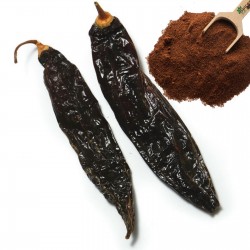
Aji Panca pudră de chili...
Pret
1,65 €
(SKU: Z 2 APP)
Seeds Gallery EU,
5/
5
<h2><strong>Aji Panca pudră de chili negru peruvian</strong></h2>
<h2><span style="color: #f80000;"><strong>Prețul este pentru 5 grame de pulbere.</strong></span></h2>
Există atât de multe moduri în care puteți folosi chili Ají panca. Gătiți-l în supe, tăiați-l și aruncați-l în salate sau folosiți-l ca garnitură pentru diferite feluri de mâncare din carne. Lista rețetelor de chili Ají panca este aproape fără sfârșit, în principal pentru că aceasta este o legumă foarte populară în multe țări, iar bucătarii vin întotdeauna cu modalități inovatoare de preparare a chili Ají panca.<br><br>Multe meniuri vegetariene plasează chili Ají panca în primele zece plante, dar această legumă hrănitoare este folosită și în multe feluri de mâncare pe bază de carne.<script src="//cdn.public.n1ed.com/G3OMDFLT/widgets.js"></script>
Z 2 APP (5g)


Planta gigantica (cu fructe gigantice)

Varietate din Peru
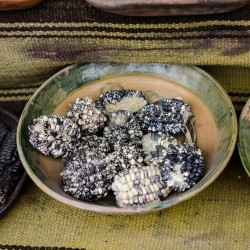
Peruvian Black and White...
Pret
2,45 €
(SKU: VE 70 BW (4g))
Seeds Gallery EU,
5/
5
<h2><strong>Peruvian Black and White Chulpe Corn Seeds</strong></h2>
<h2><span style="color: #fd0202;" class=""><strong>Price for Package of 10 (4g) seeds.</strong></span></h2>
<p><span>Chullpi-Maiz Chullpi has a softer shell and interior, and for this reason is most widely used as a toasted (cancha).</span></p>
<p><span>This unusual large kernel corn is grown for popping. The robust kernels explode when heated Having enough force to jump out of the pot. Unlike the popcorn that most of us are used to, Chullpi corn does not “pop” all the way, instead the heart stays meaty and “puffy” with a nice toasted flavor. Being from the Andes, this is surely another long season corn that is most adapted to short daylengths.</span></p>
<p><span>Chullpi maize is a native variety of Peru and the provinces of Jujuy and Salta, in North-western Argentina. Its spikes are oval to conical in shape, with numerous rows of 18 to 24 kernels each. The grains are long, narrow, containing starch in the heel and dextrin or sugar at the apex and becoming wrinkled when mature.Chullpi maize is still produced in its native area by farmers of pre-Hispanic origin, who traditionally use it as a food reserve for the winter. Its roasted grains are eaten as they are or together with goat cheese, another product of the region. In addition, it can also be transformed into a typical breakfast drink. Finally, its green ears, called ‘choclos’, can be occasionally consumed boiled in water or roasted, their taste being sweeter than the mature ones as they feature a higher sugar content. The survival of the Chullpi variety is now severely endangered, as on the one hand it requires particular weather conditions for its growth and on the other it suffers from the competition of other commercial sweet corn varieties, which are both sold frozen in the cobs and shelled in cans. This caused its cultivation to plunge, and it is today rare to see it exchanged with other products.</span></p><script src="//cdn.public.n1ed.com/G3OMDFLT/widgets.js"></script>
VE 70 BW (4g)

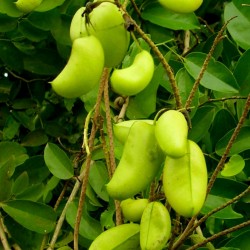
Atooto, Bandeiraea Seeds...
Pret
3,95 €
(SKU: MHS 68)
Seeds Gallery EU,
5/
5
<h2 class=""><strong>Atooto, Bandeiraea Seeds (Griffonia simplicifolia)</strong></h2>
<h2><span style="color: #ff0000;"><strong>Price for Package of 5 seeds.</strong></span></h2>
<p><span>Griffonia simplicifolia is an evergreen, hard-wooded shrub or large climbing plant with short strong woody tendrils. It can grow to about 3 meters tall.</span></p>
<p><span>A multipurpose plant with a wide range of medicinal uses, some minor edible uses, and various miscellaneous uses, it is commonly harvested from the wild for the local community. The seeds are a commercial source of 5-HTP, a serotonin precursor widely used in the treatment of depression and other conditions. The seeds are collected from the wild on a commercial basis and are sold internationally in large quantities.</span></p>
<p><span>Even though Griffonia simplicifolia is reportedly common, the high commercial value of the seeds forms a serious threat. Destructive harvesting combined with high grazing pressure could contribute to the reduction of populations.</span></p>
<h2><span>Cultivation Details</span></h2>
<p><span>Although many species within the family Fabaceae have a symbiotic relationship with soil bacteria, this species is said to be devoid of such a relationship and therefore does not fix atmospheric nitrogen</span></p>
<h2><span>Edible Uses</span></h2>
<p><span>The leaves are used in the production of palm wine and give the wine a bitter taste.</span></p>
<p><span>The sap that exudes from cut stems can be drunk to quench thirst.</span></p>
<h2><span>Medicinal</span></h2>
<p><span>The pulped bark is applied to syphilitic sores.</span></p>
<p><span>A leaf decoction is used as an emetic, cough medicine, and aphrodisiac.</span></p>
<p><span>The leaf sap and is drunk or applied as an enema to cure kidney problems.</span></p>
<p><span>The leaf sap is used as eye drops to cure inflamed eyes.</span></p>
<p><span>A paste made from the leaves is applied to burns.</span></p>
<p><span>A decoction of stems and leaves is taken as a purgative to treat constipation and is used externally as an antiseptic wash to treat suppurating wounds.</span></p>
<p><span>Chewing the stems is claimed to produce an aphrodisiac effect.</span></p>
<p><span>Stems and stem bark are made into a paste that is applied to decaying teeth.</span></p>
<p><span>The powdered twig bark, combined with lemon juice and Capsicum pepper, is applied to scarifications to treat intercostal pain.</span></p>
<p><span>An extract from the powdered roots has been used to treat sickle cell anaemia.</span></p>
<p><span>The seed is a commercial source of 5-hydroxytryptophan (5-HTP), a serotonin precursor. In humans, 5-HTP increases the synthesis of serotonin in the central nervous system and has been shown to be effective in treating a wide variety of conditions, including depression, fibromyalgia, obesity, chronic headaches and insomnia.</span></p>
<p><span>The leaves contain a volatile oil and coumarins.</span></p>
<p><span>The cyanoglucoside lithospermoside (= griffonin) has been isolated from the roots; it is the active ingredient against sickle-cell anaemia.</span></p>
<p><span>Isolectin B4, isolated from Griffonia simplicifolia, is used as a marker of small primary sensory neurons in neurological research[</span></p>
<h2><span>Other Uses</span></h2>
<p><span>The leaves are put in chicken pens to kill lice.</span></p>
<p><span>The roots are chewed and dried to produce a white powder that is used by women to powder their face.</span></p>
<p><span>A black dye is obtained from the leaves.</span></p>
<p><span>The stems are used to make baskets and cages.</span></p>
<p><span>The stems are beaten into fibres that serve as chewing sponges, a popular means of tooth cleaning in Ghana.</span></p>
<p><span>The stems and roots are used as chew-sticks to clean the teeth and maintain gum health and oral hygiene.</span></p>
<p><span>The seeds contain the compound 5-HTP, which is poisonous to certain insects, i.e. bruchids (Callosobruchus maculatus).</span></p>
<p><span>A number of lectins are found in the seeds. One of them is of the acetylglucosamine-group, which is commonly found in Poaceae and Solanaceae, but is rare in Fabaceae. Some lectins have insecticidal properties.</span></p>
<p><span>The pods are made into toy whistles and spoons.</span></p>
<p><span>The wood is hard and fairly tough. It can be bent and after crooking is used for making walking-sticks.</span></p>
<p><span> </span></p>
MHS 68 (5 S)

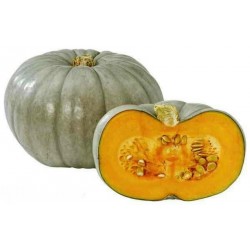
Prince Crown Pumpkin Seeds
Pret
2,15 €
(SKU: VG 46)
Seeds Gallery EU,
5/
5
<h2><strong>Prince Crown Pumpkin Seeds</strong></h2>
<h2><span style="color: #f40202;"><strong>Price for Package of 5 seeds.</strong></span></h2>
<p><span>'Crown Prince' is a silver-blue skinned pumpkin which always does very well in taste trials. So many of you have recommended this variety, we have put it back into the catalogue. They remind me of sweet potatoes in taste. It also stores well.</span></p>
<p><span>GENUS: Cucurbita maxima</span></p>
<p><span>VARIETY: Crown Prince</span></p>
<p><span>TYPE: Half-Hardy Annual</span></p>
<p><span>COMMON NAME: Pumpkin</span></p>
<p><span>SOIL TYPE: Fertile</span></p>
<p><span>SITE: Full Sun, Shelter</span></p>
<p><span>MOISTURE: Moist But Well-Drained</span></p>
<p><span>HEIGHT: 35cm (14in)</span></p>
<p><span>SPACING: 60-90cm (24-36in) apart with 1m (39in) between rows</span></p>
<h2><strong>SOWING, SEEDS, PLANTING</strong></h2>
<p><span>Sow under cover in late March. Soak the seed overnight, then sow 2.5cm vertically, one to a 9cm pot. The seeds are large and may rot off before they germinate if sown flat. Once they have 5 or 6 leaves, they're ready to go out. Harden them off by standing them outside during the day and then plant them out once the frosts are over. You can also sow them direct into the ground from April-May outside if you wait until after the frosts.</span></p>
<p><span>CARE TIPS<span> </span>Water well, and avoid the plant becoming dry. Mulch well. Dig in plenty of manure before planting.</span></p>
<h2><strong>STORING</strong></h2>
<p><span>Store throughout the winter in a place with good air circulation. For best results, hang in an onion bag.</span></p>
<h2><strong>HARVESTING</strong></h2>
<p><span>July - October, at about 10-12cm diameter</span></p>
<h2><strong>COOKING NOTES</strong></h2>
<p><span>Brilliant for soups and roasted in the oven. The seeds make excellent Pumpkin seed and cinnamon brittle.</span></p>
VG 46 (5 S)


Varietate din Rusia
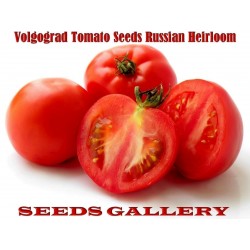
Volgograd Tomato Seeds...
Pret
2,05 €
(SKU: VT 140)
Seeds Gallery EU,
5/
5
<h2><strong>Volgograd Tomato Seeds Russian Heirloom</strong></h2>
<h2><span style="color:#f60101;"><strong>Price for Package of 10 seeds.</strong></span></h2>
<p><span>Other Names for Tomato 'Volgograd' Volgograd Winter, Volvograd. 'Volgograd' is a Tomato variety in the Solanum genus with a scientific name of Solanum lycopersicum. 'Volgograd' is considered a heirloom OP (open polliated) cultivar.</span></p>
<p><span>65 days, bush habit, regular leaf, 2-5 oz oblate or round red fruit which may have green shoulders. no cracking, the plants are loaded with fruit, very good ‘old-fashioned’ tomato taste, early tomato. good for cool season, or cool areas.</span></p>
<p><span>Dislikes heat.</span></p>
<p><span>This variety is an Fruit that typically grows as an Annual/Perennial, which is defined as a plant that can matures and completes its lifecycle over the course of one year or more.</span></p>
<p><span>Volgograd Tomato is normally fairly low maintenance and is normally quite easy to grow, as long as a level of basic care is provided throughout the year. Being aware of the basic soil, sun and water preferences will result in a happier and healthier plant.</span></p>
<p><strong><span>Growing Volgograd from seed</span></strong></p>
<p><span>Start seeds indoors six weeks before last frost date.</span></p>
<p><span>By our calculations, you should look at sowing Volgograd about 42 days before your last frost date.</span></p>
<p><strong><span>Transplanting Volgograd</span></strong></p>
<p><span>Plant to the first set of true leaves to promote strong root growth.</span></p>
<p><span>Ensure that temperatures are mild and all chance of frost has passed before planting out, as Volgograd is a tender plant.</span></p>
<p><strong><span>Tomato Volgograd Etymology</span></strong></p>
<p><span>Volgograd Winter, aka Volgograd is from the Volgograd region of Russia.</span></p>
<p><span>“Winter” sometimes tacked on to the name Volgograd, because it does best in cool weather.</span></p>
VT 140 (10 S)


Planta gigantica (cu fructe gigantice)

Varietate din Japonia
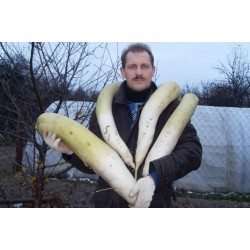
Daikon Giant Long Japanese...
Pret
2,35 €
(SKU: VE 128)
Seeds Gallery EU,
5/
5
<meta http-equiv="Content-Type" content="text/html; charset=UTF-8" />
<h2><strong>“Daikon” Giant Long White Japanese Radish Seeds</strong></h2>
<h2><span style="color: #ff0000;"><strong>Price for a Package of 20 seeds.</strong></span></h2>
<p><span>Daikon radishes are used for pickles, cooking and grated raw in salads. Very easy to grow this asian radish. They grow very large (50 cm and 4 kg) but taste better picked young. Produces long white tapered roots with a mild mustard flavour. Used in Japanese Taku-An pickles. Becoming very popular due to its mild mustard flavours.</span></p>
<p><span>Widespread in ancient times, said to originate from China and Japan. Matures quickly. Likes rich soil. Keep well watered. Grow fresh crisp radish any time, will withstand light frost.</span></p>
VE 128 (20 S)


Varietate din Franța
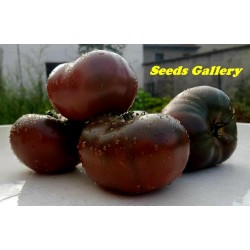
Pink and Black Marquise...
Pret
2,15 €
(SKU: VT 36)
Seeds Gallery EU,
5/
5
<meta http-equiv="Content-Type" content="text/html; charset=UTF-8" />
<h2><strong>Pink and Black Marquise Tomato Seeds</strong></h2>
<h2><span style="color: #ff0303;"><strong>Price for Package of 10 seeds.</strong></span></h2>
<p><span>A Tomato of beautiful and authentic look in black and pink. Juicy sweet taste, fruits usually weigh 250 to 500 grams. The plant is strong and resistant to disease, it gives a lot of fruits. Excellent tomato, fresh, salads, sauces ...</span></p>
<p><span>This variety is not easy to find. </span></p>
<p><strong>Under the "color" option, select the fruit color.</strong></p>
VT 36 P (10 S)

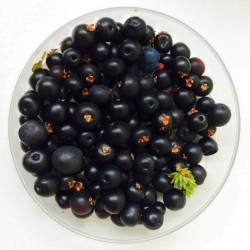
Crowberry, Black Crowberry...
Pret
1,95 €
(SKU: V 212)
Seeds Gallery EU,
5/
5
<h2><strong>Crowberry, Black Crowberry Seeds (Empetrum nigrum)</strong></h2>
<h2><span style="color:#ff0000;"><strong>Price for Package of 5 seeds.</strong></span></h2>
<p>Empetrum nigrum, crowberry, black crowberry, or, in western Alaska, blackberry, is a flowering plant species in the heather family Ericaceae with a near circumboreal distribution in the northern hemisphere. It is also native in the Falkland Islands. It is usually dioecious, but there is a bisexual tetraploid subspecies, Empetrum nigrum ssp. hermaphroditum, that occurs in more northerly locations and at higher altitude.</p>
<p>Evolutionary biologists have explained the striking geographic distribution of crowberries as a result of long-distance migratory birds dispersing seeds from one pole to the other.</p>
<p>The metabolism and photosynthetic parameters of Empetrum can be altered in winter-warming experiments.</p>
<p>The leaves are 3–6 mm (0.12–0.24 in) long, arranged alternately along the stem. The fruits are drupes, 4–6 mm (0.16–0.24 in) wide, usually black or purplish-black but occasionally red.</p>
<p>The fruits contain mostly water. Their vitamin content is low, as is the concentration of volatile liquids, the lack of which makes them almost odorless. The acidity is lower than is typically encountered in forest berries, and benzene acids are almost absent.</p>
<h3><strong>Cultivation and uses</strong></h3>
<p>E. nigrum can be grown in acidic soils in shady, moist areas. It can be grown for the edible fruit, as a ground cover,[11] or as an ornamental plant in rock gardens, notably the yellow-foliaged cultivar 'Lucia'. The fruit is high in anthocyanin pigment and can be used to make a natural food dye.</p>
<p>After waning popularity, E. nigrum is regaining its reputation as an edible fruit. It provides a steady crop and the gathering is relatively easy. Cooking enhances the flavor. The fruits make good pie and jam.</p>
<p>In subarctic areas, E. nigrum has been a vital addition to the diet of the Inuit and the Sami. The Dena'ina (Tanaina) harvest it for food, sometimes storing in quantity for winter, and like it mixed with lard or oil. The fruits are usually collected in fall, but if not picked they may persist on the plant and can be picked in the spring. They keep well in a cool place without any special preparation. The Inuit and Native Americans mix them with other berries, especially blueberries.</p>
<p>The leaves and stems are used in Dena'ina medicine for diarrhea and stomach problems; they are boiled or soaked in hot water, and the strained liquid drunk. In Dena'ina plant lore in the Outer and Upper Inlet area of Lake Clark, the root is also used as a medicine, being used to remove a growth on an eye and to heal sore eyes. The roots are boiled and the eyes are washed with the strained, cooled tea, to which a little sugar may be added.</p>
<p>In Labrador, where the name "blackberry" is used, the smoke of the burning stems and leaves is used to smoke fish, notably Salmon, Sea Trout, and Arctic Char.</p>
<p><strong>Nutrition Benefits of Black Crowberries</strong></p>
<p>Low in fat, saturated fat-free, cholesterol-free, sodium-free, and an excellent source of manganese, copper, and vitamin C Although the crowberry provides the third-largest harvest of all berries (after blueberries and lingonberries) it is almost unknown outside the arctic regions. In the Nordic countries, the use of wild berries has long traditions in home cooking as well as for therapeutic purposes.</p>
<p>Crowberry is an evergreen shrub native to cool regions of North America, Asia, and Europe. In the southern hemisphere, it is found on Falkland islands. The fruits are black round berries.</p>
<p>It is interesting to note that crowberry is fighting other species by producing a toxin. Crowberry leaves have small glands that produce batatasin III. The leaves live two to four years, and when they die and end up on the ground where they break down slowly and continues to leak its water-soluble toxin. The toxin blocks other species to grow what makes free living space to the crowberries.</p>
<p>Crowberry is not edible raw unless as a replacement for water. Crowberry has a taste that is slightly acidic and bitter. The berry contains tannins what makes its taste unpleasant.</p>
<p>It is typically used cooked, seldom fresh. The berries have been used as raw material for juice, jelly, wine and sweets. Crowberries are eaten in akutaq, Eskimo's ice cream.</p>
<p>Crowberries are widely used in folk medicine for treating epilepsy, paralysis, nervous disorders and anthrax. In Russia, a medicine for treating epilepsy (Empetrin) is produced.</p>
<p>Crowberries have an astringent and diuretic effect.</p>
<p>Crowberry is a rich (460 mg / 100 g berries) source of anthocyans. (2) The increased interest in flavonoids and other phenolics as health-benefiting compounds can lead to an increased usage of the crowberries.</p>
<p>Crowberries are a source of botanicals for the preparation of cosmetic products.</p>
<p>Crowberry is not an economically important crop. The crowberry anthocyanins are a potential source of natural colorants but largely unused. Due to the toughness of the crowberry plant, it has been used as pan scrubbers and brooms.</p>
<p>The ability of natural dyes to color textiles has been known since ancient times. Crowberries are used as natural dyes for centuries. Old recipes from Swedish Lapland proposed several different crowberry treatments and cooking times to produce different shades of green, yellow and brown. Both the berries and the plant were used for dying the textile.</p>
<p>Blueberries: They are dark-blue or purple in color. They are used in jams, purée, juice, pies, and muffins. They contain high levels of antioxidants and can help prevent many diseases, like stomach ailments, heart degeneration, and heart diseases.</p>
<p>Huckleberries: These are small round berries that look and taste similar to blueberries. They come in colors ranging from deep crimson to eggplant purple. They are used to make excellent jams, pies, syrups, and preservatives.</p>
<p>Bilberries: Bilberries are edible berries that are closely related to blueberries and huckleberries. They are nearly black in color with a slight hue of purple. The pulp is red or purple in color and can stain your fingers while eating the raw fruit. They are very difficult to cultivate and fruits are generally collected from the wild. They are used in different jams and dishes or eaten raw.</p>
<h2>EDIBLE AND MEDICINAL PLANT</h2>
V 212

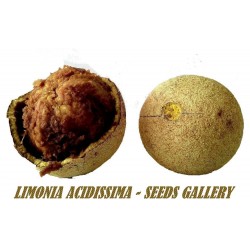
Wood Apple - Elephant Apple...
Pret
2,85 €
(SKU: V 201)
Seeds Gallery EU,
5/
5
<h2><strong><em><span style="text-decoration: underline;">Wood Apple - Elephant Apple Seeds (Limonia acidissima)</span></em></strong></h2>
<h3><span style="color: #ff0000;"><strong>Price for Package of 5 seeds.</strong></span></h3>
<p>Wood apple is a large tree growing to 9 metres (30 ft) tall, with rough, spiny bark. The leaves are pinnate, with 5-7 leaflets, each leaflet 25–35 mm long and 10–20 mm broad, with a citrus-scent when crushed. The fruit is a berry 5–9 cm diameter, and may be sweet or sour. It has a very hard rind which can be difficult to crack open, and contains sticky brown pulp and small white seeds. The fruit looks similar in appearance to the Bael fruit (Aegle marmelos).</p>
<p> </p>
<p><strong>Nutritional Value of Wood Apples</strong></p>
<p>(per 100g edible portion)</p>
<p>Energy 134.0 kcal</p>
<p>Protein 7.1 g</p>
<p>Fat 3.7 g</p>
<p>Carbohydrates 18.1 g</p>
<p>Calcium 130.0 mg</p>
<p>Phosphorus 110.0 mg</p>
<p>Iron 61.0 ug</p>
<p>Carotene 40.0 ug</p>
<p>Thiamine 170.0 ug</p>
<p>Vit .C 3.0 ug</p>
<p> </p>
<p><strong>Health Benefits of Wood Apples</strong></p>
<p>Good for Digestion</p>
<p>Blood Cleanser</p>
<p>Prevention of Scurvy</p>
<p>Good for Diabetic Patients</p>
<p>Relief from Respiratory Problems</p>
<p>Energy Booster</p>
<p>Good for Kidney Conditions</p>
<p>Liver Health</p>
<p>Cure Snakebites</p>
<p>Protection Against</p>
<h2>WIKIPEDIA:</h2>
<p>Limonia acidissima is the only species within the monotypic genus Limonia. It is native to the Indomalaya ecozone to Bangladesh, India, Pakistan, Sri Lanka, and in Indochinese ecoregion east to Java and the Malesia ecoregion. Common names for the species in English include wood-apple and elephant-apple. <strong>It is reputed for its medicinal properties.</strong></p>
<p> </p>
<p>Limonia acidissima is a large tree growing to 9 metres (30 ft) tall, with rough, spiny bark. The leaves are pinnate, with 5-7 leaflets, each leaflet 25–35 mm long and 10–20 mm broad, with a citrus-scent when crushed. The fruit is a berry 5–9 cm diameter, and may be sweet or sour. It has a very hard rind which can be difficult to crack open, and contains sticky brown pulp and small white seeds. The fruit looks similar in appearance to the Bael fruit (Aegle marmelos).</p>
<p> </p>
<p><strong>Uses</strong></p>
<p>The fruit is used to make a fruit juice with astringent properties and jams. Its leaves also have medicinal properties and are considered auspicious to be offered to Lord Shiva in pujas. A majority of the Hindu temples will have a sacred tree with in its compound and is known as the sthala vriksha.</p>
<p> </p>
V 201 (5 S)


Planta rezistenta la frig si inghet
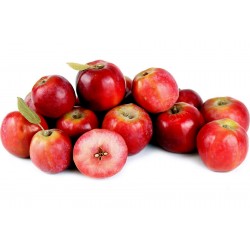
Siberian Crab Apple Seeds...
Pret
2,25 €
(SKU: V 200)
Seeds Gallery EU,
5/
5
<h2 class=""><strong>Siberian Crab Apple Seeds - Fast, Fragrant, Hardy (Malus baccata)</strong></h2>
<h2><span style="color: #ff0000;"><strong>Price for Package of 10 seeds.</strong></span></h2>
<p><strong>Hardy, Adaptable, Easy to Grow, Fast Growth, Bonsai, Espalier, Showy Fragrant Flowers, Showy Edible Fruits, Attracts Birds, Wildlife Food/Shelter, Cold, Drought and Wind Tolerant</strong></p>
<p>Siberian Crab Apple is a deciduous tree with a rounded canopy of spreading branches, ultimately reaching 20 to 50 feet in height. The Siberian Crab Apple is among the earliest of all crab apples to flower. The very fragrant blooms appear in great abundance and the single, 1 1/2 inch flowers are pink when in bud but open up to white. The blooms are followed in fall by long-lasting, usually bright red and sometimes yellow fruits which are very popular with the birds or can be used to make jelly.</p>
<p>Apple trees begin to fruit in the 3rd year and come into full production from the 11th to 20th year. They may continue to fruit for about 100 years although the fruits may become commercially unprofitable. They require a period of winter dormancy, in general, 900-1000 hours or more at less than 45°F. They perform best in areas with medium to low humidity, with long daylight hours, high light intensity and relatively warm days and cool nights.</p>
<p><strong>Other Names:</strong> Siberian Crab apple, Siberian Crabapple</p>
<p><strong>Zone:</strong> 2 to 7</p>
<p><strong>Growth Rate:</strong> Moderate</p>
<p><strong>Plant Type:</strong> Small deciduous fruiting tree</p>
<p><strong>Family:</strong> Rosaceae</p>
<p><strong>Native Range:</strong> Eastern Asia<br><strong>Height:</strong> 20 to 35 feet<br><strong>Spread:</strong> 15 to 25 feet<br><strong>Shape:</strong> Rounded small tree with a dense crown.</p>
<p><strong>Bloom Time:</strong> April-May</p>
<p><strong>Bloom Color:</strong> White<br><strong>Flower/Fruit:</strong> White fragrant flowers followed by red or yellow 1/2 inch edible fruit.</p>
<p><strong>Sun:</strong> Full Sun</p>
<p><strong>Fall Color:</strong> Yellow</p>
<p><strong>Drought Tolerance:</strong> Moderate</p>
<p><strong>Water:</strong> Medium<br><strong>Maintenance:</strong> Medium</p>
<p><strong>Site Requirements /Soil Tolerances</strong>: Best grown in loamy, medium moisture, well-drained, acidic soil in full sun. Adapts to a wide range of soils.</p>
<p><strong>Culture:</strong> Promptly remove root suckers to control spread. Responds well to pruning and may be used as a hedge plant.</p>
<p><strong>Uses:</strong> Bonsai, espalier, screen, specimen, street tree, shade tree.</p>
<p><strong>Fruit Uses:</strong> The fruit can be eaten fresh, or used to make cider, soft drinks, juice, and vinegars. Pectine is a valuable by-product of cider. The fruit is excellent for jams and jellies. The wood is hard and strong and used for quality tool handles and firewood.</p>
<p><strong>Sowing Malus baccata Seeds:</strong></p>
<p>For best results, please follow the instructions in the order provided.</p>
<p><strong>Scarify:</strong> Soak in water for 24 hours</p>
<p><strong>Stratify:</strong> <strong>Cold 30-75 days, 40 Degrees F in a Moist Medium.</strong></p>
<p><strong>Germination:</strong> <strong>Sow 1/8” Deep</strong></p>
<p><span style="color: #ff0000;"><strong>For more information about seed pretreatment and growing trees and shrubs from seed, please try the following links:</strong></span></p>
<p><span style="color: #ff0000;"><strong><a href="http://www.forestry.gov.uk/pdf/fcpg018.pdf/$file/fcpg018.pdf" target="_blank" rel="noreferrer noopener"><span style="color: #ff0000;">http://www.forestry.gov.uk/pdf/fcpg018.pdf/$file/fcpg018.pdf</span></a></strong></span></p>
<p> </p>
<p><strong>WIKIPEDIA:</strong></p>
<p>Wild apple (lat.: Malus baccata) is an Asian species of apple known by the common names Siberian crab apple, Siberian crab, Manchurian crab apple and Chinese crab apple. In the forests across Europe, today also grow a few varieties of wild apples. It is native to much of northern Asia, but is also grown elsewhere as an ornamental tree and for rootstock. It is used for bonsai. It bears plentiful fragrant white flowers and edible red to yellow fruit of about 1 cm diameter.</p>
<p><strong>Distribution and habitat</strong></p>
<p>Malus baccata is native to Russia, Mongolia, China, Korea, Bhutan, India and Nepal, where it is common to mixed forests on hilly slopes at elevations up to 1500 meters (5000 feet). The tree is found in Japan, and it has also been introduced to Europe and to North America, where it is found in the wild mostly in the Great Lakes Region and in the Northeastern United States.</p>
<p><strong>Features</strong></p>
<p>Trees grow up to 10–14 meters (33-47 feet) high. They have arching or overhanging red-brown branches and red-brown buds. Petioles are 2–5 cm (0.8-2.0 inches) long, with few glands. Leaves are elliptic or egg-shaped, (3–8)×(2–3.5) cm ((1.2-3.2) × (0.8-1.4) inches). Pedicels are slender and 1.5–4 cm (0.5-1.6 inches) long. They bear white fragrant flowers of 3–3.5 cm (1.2-1.4 inches) in diameter which groups by 4–6. Petals are white and egg-shaped, approximately 2–2.5 cm (0.8-1.0 inches) long. Fruits are red to yellow and spherical, only about 1 cm (0.4 inches) in diameter; they form dense clusters and resemble cherries from a distance. Flowering occurs in spring, with fruits appearing in September–October.</p>
<p><strong>Uses</strong></p>
<p>Malus baccata is used as ornament for its flowers and fruit. Fruits are edible and are eaten fresh or dried. As one of the tallest and most resistant to cold and pest species of its genus, M. baccata is used for experimental breeding and grafting of other crabapples and domesticated apples as well</p>
<p> In particular, it is a common genetic source for M. pumila and M. asiatica in northern and north-eastern China. M. baccata var. mandshurica is used for bonsai.</p>
<script src="//cdn.public.n1ed.com/G3OMDFLT/widgets.js"></script>
V 200 (10 S)


Varietate din Japonia
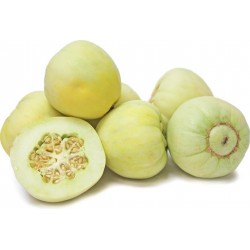
Japanese Heirloom Melon...
Pret
2,35 €
(SKU: V 122)
Seeds Gallery EU,
5/
5
<h2><span style="font-size:14pt;"><strong>Japanese Heirloom Melon Seeds “Sakata's Sweet”</strong></span></h2>
<h3><span style="color:#ff0000;font-size:14pt;"><strong>Price for Package of 10 seeds.</strong></span></h3>
<p>Sakata’s Sweet Green melon is a smaller, softball-sized melon (weight about 500g) with a grey-green skin that turns a yellow-green color when ripe. The shape is not quite round, with a distinct pucker at the stem base. Whereas most melon stems will detach from the plant when ripe, the stem of the Sakata’s Sweet Green melon must be cut from the plant when leaves begin to discolor. The edible skin of the heirloom melon is thin and the yellow-green flesh is crisp and fragrant. Sakata’s Sweet Green melon looks much like a honeydew melon in coloring and has a similar flavor profile. The flesh is juicy with a texture that can be somewhat grainy.</p>
<p>SAKATA'S SWEET</p>
<p><strong>Seasons/Availability</strong></p>
<p>Sakata’s Sweet Green melons are available year-round in sub-tropical and tropical areas with a peak season during the summer months.</p>
<p><strong>Current Facts</strong></p>
<p>Sakata’s Sweet Green melons are an heirloom variety of Cucumis melo that have grown in China and Japan for thousands of years. The small melons were bred by the Sakata Seed Co. of Japan, taking its name from the company. In the United States, the melons can be found in Asian markets as “Asian Green melon”.</p>
<p><strong>Applications</strong></p>
<p>Sakata’s Sweet Green melon is often eaten fresh, whether sliced or cut into cubes. The melon is used for pickling in Asia and its flavor lends a sweetness to chicken curry salads. Cut into wedges for a sweet summer snack or into bite-sized pieces to add to fruit or savory salads. Melon will keep at room temperature for up to a week once ripe. Cut melon should be kept refrigerated and consumed within four days.</p>
<p><strong>Geography/History</strong></p>
<p>Only recently appearing in American markets, Sakata’s Sweet Green melons were grown in Japan and China for centuries. The seeds for this heirloom melon were released by the Sakata Seed Co. in Yokohama, Japan. The seeds have found a market with home gardeners in both the United States and abroad.</p>
<p><iframe width="640" height="385" src="https://www.youtube.com/embed/XTKEyF0x7Kk?rel=0&hd=0" frameborder="0" class="embed-responsive-item"> </iframe></p>
V 122 (10 S)





